1. Import Swagger coordinate dependencies
<dependency>
<groupId>io.springfox</groupId>
<artifactId>springfox-swagger2</artifactId>
<version>${swagger.version}</version>
</dependency><dependency>
<groupId>io.springfox</groupId>
<artifactId>springfox-swagger-ui</artifactId>
<version>${swagger.version}</version>
</dependency>The most commonly used version is 2.9.2
2. Add annotations to the spring startup class@ EnableSwagger2

The @EnableSwagger2 annotation provided by springfox can enable swagger2 related technologies. The program will traverse all types in the package and its sub-packages of the current class to find annotations related to Swagger and customize the Swagger document
3. Start the project and view the swaggerui.html interface



Click try it out to enter the corresponding parameters to view the returned results
Fourth, write the SwaggerConfig configuration file
@EnableSwagger2
@Configuration
public class SwaggerConfig {
@Autowired
private ApplicationContext applicationContext;
private Contact contact = new Contact("NIUA","localhost:8080/swagger-ui.html", "1053288979@qq.com");
@Bean
public Docket createRestApi() {
ServletContext servletContext = applicationContext.getBean(ServletContext.class);
return new Docket(DocumentationType.SWAGGER_2)
.select()
.apis(RequestHandlerSelectors.any())
.paths(Predicates.not(regex("/error.*")))
.build()
.apiInfo(apiInfo());
}
private ApiInfo apiInfo() {
return new ApiInfoBuilder()
.title("平台接口 v1.0")
.description("平台接口")
.contact(contact)
.version("1.0")
.build();
}
}@Bean
public Docket createRestApi() {
ServletContext servletContext = applicationContext.getBean(ServletContext.class);
return new Docket(DocumentationType.SWAGGER_2)
.select()
.apis(RequestHandlerSelectors.any())
.paths(Predicates.not(regex("/error.*")))
.build()
.apiInfo(apiInfo());
}Create a Docker type object and use spring container management. Docker is the global configuration object in Swagger
Use DocumentationType.SWAGGER_2 to specify the class object of Docket to determine which version is used
apiInfo(): Description information of the API document, the parameter is one ApiInfo class object, use the bulid() builder to create
private ApiInfo apiInfo() { return new ApiInfoBuilder() .title("平台接口 v1.0") .description("平台接口") .contact(contact) .version("1.0") .build(); }contact(): Configure the main content of the swagger document, which is also a class object. The class object can have up to three parameters, Publisher name, document publisher's website URL address (corporate website), document publisher's email address
private Contact contact = new Contact("NIUA","localhost:8080/swagger-ui.html", "1053288979@qq.com");title(): Title description(): Description information.version(): Version information
corresponds to the following content
The method that returns ApiSelectorBuilder is select(), which is used to obtain the selector in Docker. Build selectors. For example, what packages should be scanned for annotations
apis(): followed by the (Predicate) rules under the RequestHandlerSelectors class, which stipulates the annotations of those packages to be scanned. The default is the annotations under the startup class and its sub-packages
There are several static methods under the RequestHandlerSelectors class (three examples)
basePackage(): Fill in the specific address of the package name later, and the annotations of the modified package and its sub-packages will be scanned
docker.apis(RequestHandlerSelectors.basePackage("com.xxx"))any(): Generate API documentation for any interface
none(): Do not generate interface documentation for any interface
path(): Use regular expressions, constraint generation The path address of the Api document, followed by the filtered (passed) path
//过滤掉admin路径下的所有页面 .paths(Predicates.not(PathSelectors.regex("/admin/.*"))) //过滤掉所有error或error.*页面 .paths(Predicates.not(PathSelectors.regex("/error.*"))) //所有error或error.*页面或者admin路径下的所有页面都支持(or任意满足起一就通过) .paths(Predicates.or(PathSelectors.regex("/error.*"),PathSelectors.regex("/admin/.*")))
5: Swagger supports custom annotations
is not mentioned here, you can search it yourself if you are interested (leave a Location, will be used later)
Six: Swagger2 common annotations
@Api (commonly used)
Function : @Api is a class Note on. Control the content of the interface information generated by the entire class
Attributes:
tags: The name of the class. If there are multiple values, which means there are multiple copies (aliases) available, the SwaggerUI view will show which controllers have access to the menu through which
description: description, obsolete


@ApiOperation
Function: @ApiOperation is an annotation on the method, describing the relevant information of the method
Attributes:
value:Method description function
notes:Method notes (expand description)



@ApiParm
Function: @ApiParm is a method parameter annotation. Describe the parameter
Attribute:
name:Parameter name
value:Describe the function of the parameter
required:The value is of boolean type , indicating whether the parameter is a necessary parameter, the default is false


@ApiIgnore
作用:@ApiParm是方法或者参数的注解。忽略注解的方法或者参数,不生成帮助文档

@ApiImplicitParam(常用)
作用:@ApiParm是作用于类上方法,用来描述方法参数的注解。
属性:
name:参数名称,和方法的参数一致
value:参数具体描述
required:值为boolean类型,表示该参数是否为必要参数,默认为false
paramType:参数类型
paramType="字符串" paramType = "header"dataType:数据类型
dataType = "string" //字符串数据 dataType = "键值对"


@ApiImplicitParams
后面跟@ApiImplicitParam的集合,一般用于多个参数的描述

@ApiImplicitParams({@ApiImplicitParam(name = "Authorization", value = "Authorization token", required = true, dataType = "string", paramType = "header")})@ApiModel(常用)
作用:@ApiModel是作用于实体类上,描述一个实体类型,整个实体类型如果成为任何一个生成api帮助文档的返回对象的时候,该注解被解析
属性:
value:实体类名称
description:实体类描述
@ApiModelProperty(常用)
作用:@ApiModel是作用于实体类的属性上,描述实体类属性
属性:
value:实体属性描述
name:实体类属性名字,与属性名一致

The above is the detailed content of How to use Swagger2 and annotation explanation in SpringBoot project. For more information, please follow other related articles on the PHP Chinese website!
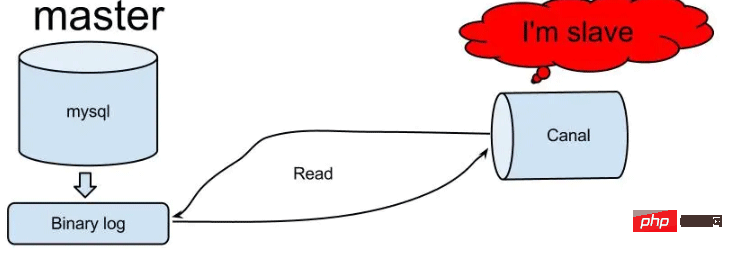 怎么使用SpringBoot+Canal实现数据库实时监控May 10, 2023 pm 06:25 PM
怎么使用SpringBoot+Canal实现数据库实时监控May 10, 2023 pm 06:25 PMCanal工作原理Canal模拟MySQLslave的交互协议,伪装自己为MySQLslave,向MySQLmaster发送dump协议MySQLmaster收到dump请求,开始推送binarylog给slave(也就是Canal)Canal解析binarylog对象(原始为byte流)MySQL打开binlog模式在MySQL配置文件my.cnf设置如下信息:[mysqld]#打开binloglog-bin=mysql-bin#选择ROW(行)模式binlog-format=ROW#配置My
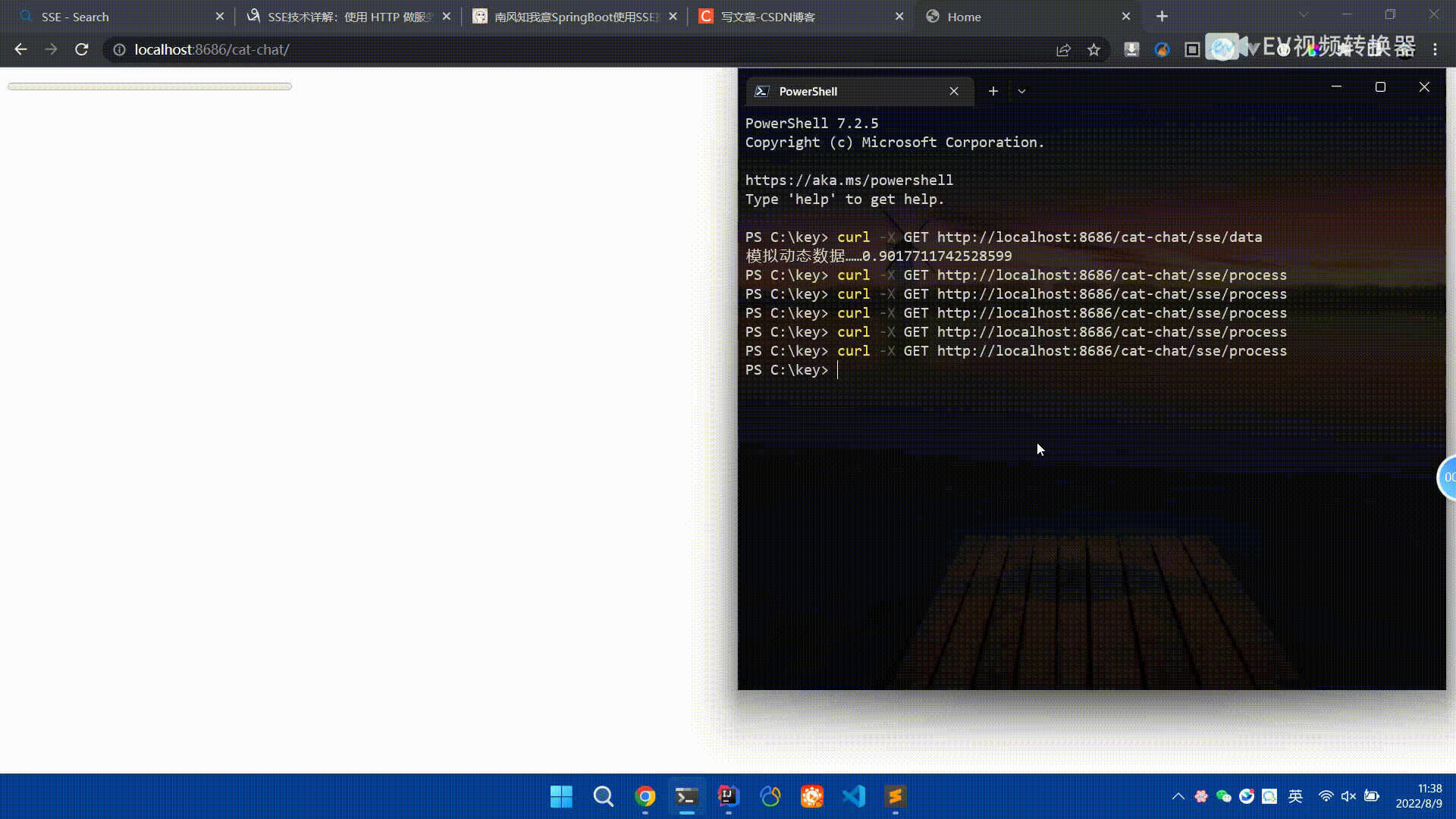 Spring Boot怎么使用SSE方式向前端推送数据May 10, 2023 pm 05:31 PM
Spring Boot怎么使用SSE方式向前端推送数据May 10, 2023 pm 05:31 PM前言SSE简单的来说就是服务器主动向前端推送数据的一种技术,它是单向的,也就是说前端是不能向服务器发送数据的。SSE适用于消息推送,监控等只需要服务器推送数据的场景中,下面是使用SpringBoot来实现一个简单的模拟向前端推动进度数据,前端页面接受后展示进度条。服务端在SpringBoot中使用时需要注意,最好使用SpringWeb提供的SseEmitter这个类来进行操作,我在刚开始时使用网上说的将Content-Type设置为text-stream这种方式发现每次前端每次都会重新创建接。最
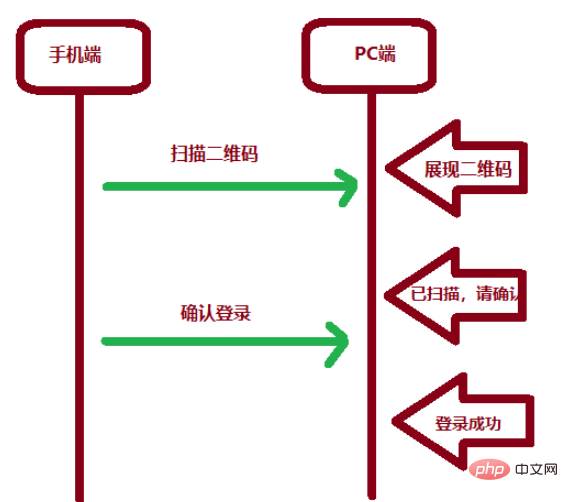 SpringBoot怎么实现二维码扫码登录May 10, 2023 pm 08:25 PM
SpringBoot怎么实现二维码扫码登录May 10, 2023 pm 08:25 PM一、手机扫二维码登录的原理二维码扫码登录是一种基于OAuth3.0协议的授权登录方式。在这种方式下,应用程序不需要获取用户的用户名和密码,只需要获取用户的授权即可。二维码扫码登录主要有以下几个步骤:应用程序生成一个二维码,并将该二维码展示给用户。用户使用扫码工具扫描该二维码,并在授权页面中授权。用户授权后,应用程序会获取一个授权码。应用程序使用该授权码向授权服务器请求访问令牌。授权服务器返回一个访问令牌给应用程序。应用程序使用该访问令牌访问资源服务器。通过以上步骤,二维码扫码登录可以实现用户的快
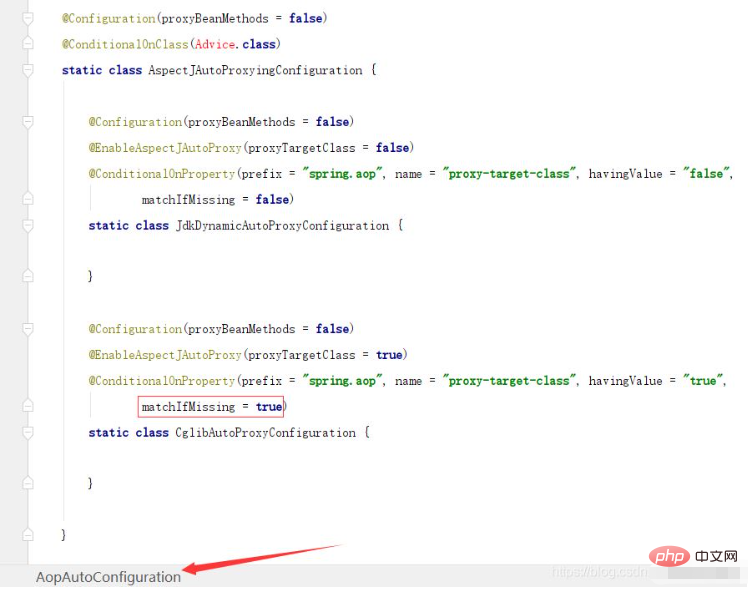 SpringBoot/Spring AOP默认动态代理方式是什么May 10, 2023 pm 03:52 PM
SpringBoot/Spring AOP默认动态代理方式是什么May 10, 2023 pm 03:52 PM1.springboot2.x及以上版本在SpringBoot2.xAOP中会默认使用Cglib来实现,但是Spring5中默认还是使用jdk动态代理。SpringAOP默认使用JDK动态代理,如果对象没有实现接口,则使用CGLIB代理。当然,也可以强制使用CGLIB代理。在SpringBoot中,通过AopAutoConfiguration来自动装配AOP.2.Springboot1.xSpringboot1.xAOP默认还是使用JDK动态代理的3.SpringBoot2.x为何默认使用Cgl
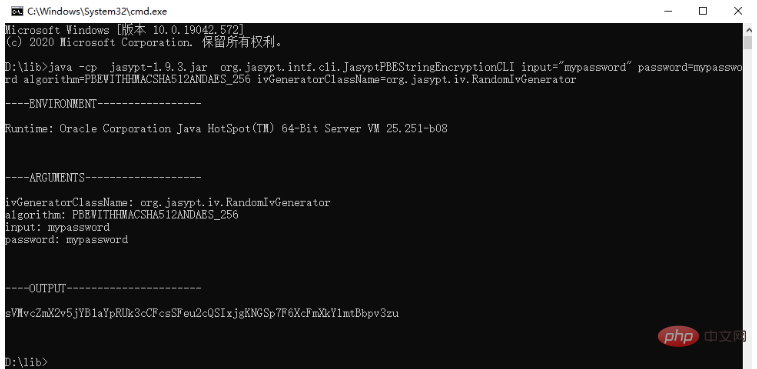 spring boot怎么对敏感信息进行加解密May 10, 2023 pm 02:46 PM
spring boot怎么对敏感信息进行加解密May 10, 2023 pm 02:46 PM我们使用jasypt最新版本对敏感信息进行加解密。1.在项目pom文件中加入如下依赖:com.github.ulisesbocchiojasypt-spring-boot-starter3.0.32.创建加解密公用类:packagecom.myproject.common.utils;importorg.jasypt.encryption.pbe.PooledPBEStringEncryptor;importorg.jasypt.encryption.pbe.config.SimpleStrin
 使用Java SpringBoot集成POI实现Word文档导出Apr 21, 2023 pm 12:19 PM
使用Java SpringBoot集成POI实现Word文档导出Apr 21, 2023 pm 12:19 PM知识准备需要理解ApachePOI遵循的标准(OfficeOpenXML(OOXML)标准和微软的OLE2复合文档格式(OLE2)),这将对应着API的依赖包。什么是POIApachePOI是用Java编写的免费开源的跨平台的JavaAPI,ApachePOI提供API给Java程序对MicrosoftOffice格式档案读和写的功能。POI为“PoorObfuscationImplementation”的首字母缩写,意为“简洁版的模糊实现”。ApachePOI是创建和维护操作各种符合Offic
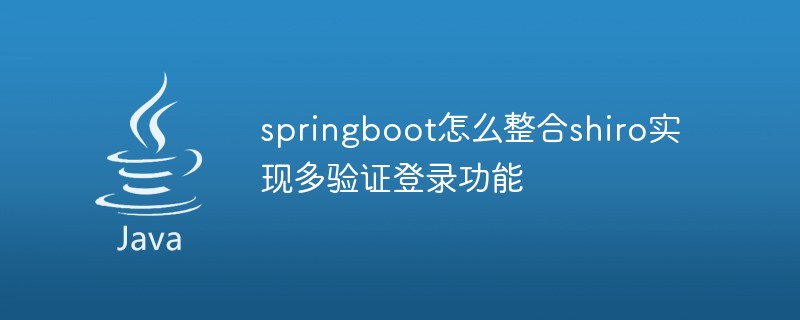 springboot怎么整合shiro实现多验证登录功能May 10, 2023 pm 04:19 PM
springboot怎么整合shiro实现多验证登录功能May 10, 2023 pm 04:19 PM1.首先新建一个shiroConfigshiro的配置类,代码如下:@ConfigurationpublicclassSpringShiroConfig{/***@paramrealms这儿使用接口集合是为了实现多验证登录时使用的*@return*/@BeanpublicSecurityManagersecurityManager(Collectionrealms){DefaultWebSecurityManagersManager=newDefaultWebSecurityManager();
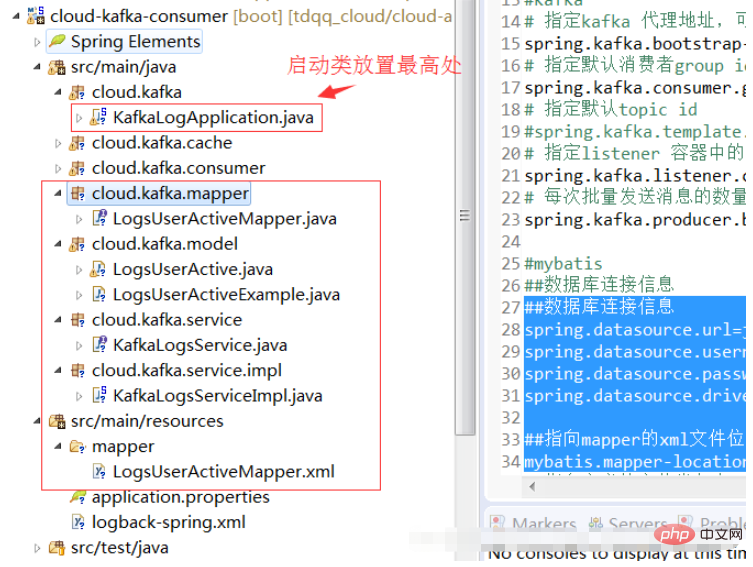 springboot怎么配置mybatis和事务管理May 10, 2023 pm 07:13 PM
springboot怎么配置mybatis和事务管理May 10, 2023 pm 07:13 PM一、springboot与mybatis的配置1.首先,springboot配置mybatis需要的全部依赖如下:org.springframework.bootspring-boot-starter-parent1.5.1.RELEASEorg.springframework.bootspring-boot-starter-web1.5.1.RELEASEorg.mybatis.spring.bootmybatis-spring-boot-starter1.2.0com.oracleojdbc


Hot AI Tools

Undresser.AI Undress
AI-powered app for creating realistic nude photos

AI Clothes Remover
Online AI tool for removing clothes from photos.

Undress AI Tool
Undress images for free

Clothoff.io
AI clothes remover

AI Hentai Generator
Generate AI Hentai for free.

Hot Article

Hot Tools

SublimeText3 Chinese version
Chinese version, very easy to use

SublimeText3 English version
Recommended: Win version, supports code prompts!

MantisBT
Mantis is an easy-to-deploy web-based defect tracking tool designed to aid in product defect tracking. It requires PHP, MySQL and a web server. Check out our demo and hosting services.

Dreamweaver CS6
Visual web development tools

WebStorm Mac version
Useful JavaScript development tools







